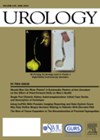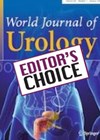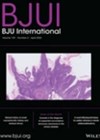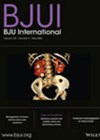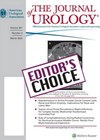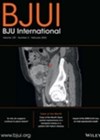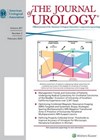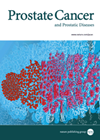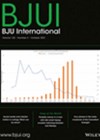
Journal Reviews
AML – a rare variant
With the increasing number of CT and ultrasound scans performed in hospital practice more and more incidental angiomyolipomas (AML) are being picked up, some of which are asymptomatic and may not bother patients at all. This study comes from the...
Save the orchid
In many urological cancers there is currently more and more inclination for organ-preserving surgery but in patients with germ cell tumours (GCT), radical orchidectomy remains the gold standard. Can we somehow save the testes? This study aims to summarise published...
Outcomes of sarcomatoid differentiation in urothelial carcinoma
Sarcomatoid differentiation is a rare variant of urothelial carcinoma (UC) seen in 0.6% of cases. Its response to neo-adjuvant chemotherapy (NAC) has not been well reported. The authors have done a retrospective analysis of patients undergoing cystectomy between 1995 and...
PIRADS-3 lesions and clinically significant prostate cancer – what are we missing?
The use of pre-biopsy MRI has definitely enhanced our decision making in managing patients with suspected prostate cancer (PCa). There is still uncertainty around the outcomes for patients with PIRADS-3 lesions, with a small but definite risk of missing clinically...
Intravesical cytosine arabinoside + Mitomycin C for bladder cancer – is it beneficial?
Mitomycin C (MMC) is often used as an intravesical therapy for low / intermediate risk non-muscle invasive bladder cancer. This randomised controlled trial (RCT) was designed to assess the safety and efficacy of MMC + cytosine arabinoside (Ara-C). Ara-C was...
Biopsy should be considered for older boys (>10 years) undergoing orchidopexy for intra-abdominal testes
Cryptorchidism is associated with a 3 to 10-fold increase in malignancy and the age at which it is undertaken matters; the risk of testicular cancer is doubled in patients undergoing orchidopexy at 13 years of age compared to that treated...
To clamp or not to clamp – outcomes of the CLOCK trial for robotic partial nephrectomy
The benefits of partial over radical nephrectomy are well established. The CLOCK trial (CLamp vs. Off Clamp the Kidney during robotic partial nephrectomy) was designed as a multicentre, randomised controlled trial to generate evidence on the role of the off-clamp...
BUS for urethral stricture
The earliest description of urethral stricture and its treatment occurred in the sixth century BC in India. A wide variety of factors can lead to stricture disease e.g. iatrogenic, urinary tract infection (UTI), sexually transmitted infections, catheters, trauma to the...
Upper tract urothelial carcinoma following cystectomy
Metachronous upper tract urothelial cancer (UTUC) is encountered in about 5% of patients after radical cystectomy (RC) with a median time to diagnosis of 24-36 months after RC, and most are asymptomatic and detected by surveillance protocols. In this multivariate...
Is Retzius-sparing prostatectomy the way forward?
Urinary incontinence is a common complication of conventional robot-assisted radical prostatectomy (RARP). Retzius-sparing RARP is performed through the pouch of Douglas to avoid destroying the pelvic fascia and the prostate’s anatomical structures. It has shown early favourable results in terms...
Is robotic pyeloplasty in the under-ones as good as open repair?
Pelviureteric junction obstruction (PUJO) is a common cause of paediatric hydronephrosis. Indications for intervention include reduced renal function (<40%), symptoms (urinary tract infection or pain) and increasing dilatation. Although the Anderson-Hynes open pyeloplasty (OP) has long been the gold standard...
BCG after TURBT – does timing matter?
Intravesical bacille Calmette–Guerin (BCG) therapy continues to be widely used for patients with intermediate / high-risk non-muscle invasive bladder cancer (NMIBC). In this article, the researchers identified the lack of sufficient evidence with regards to timing of BCG after transurethral...

